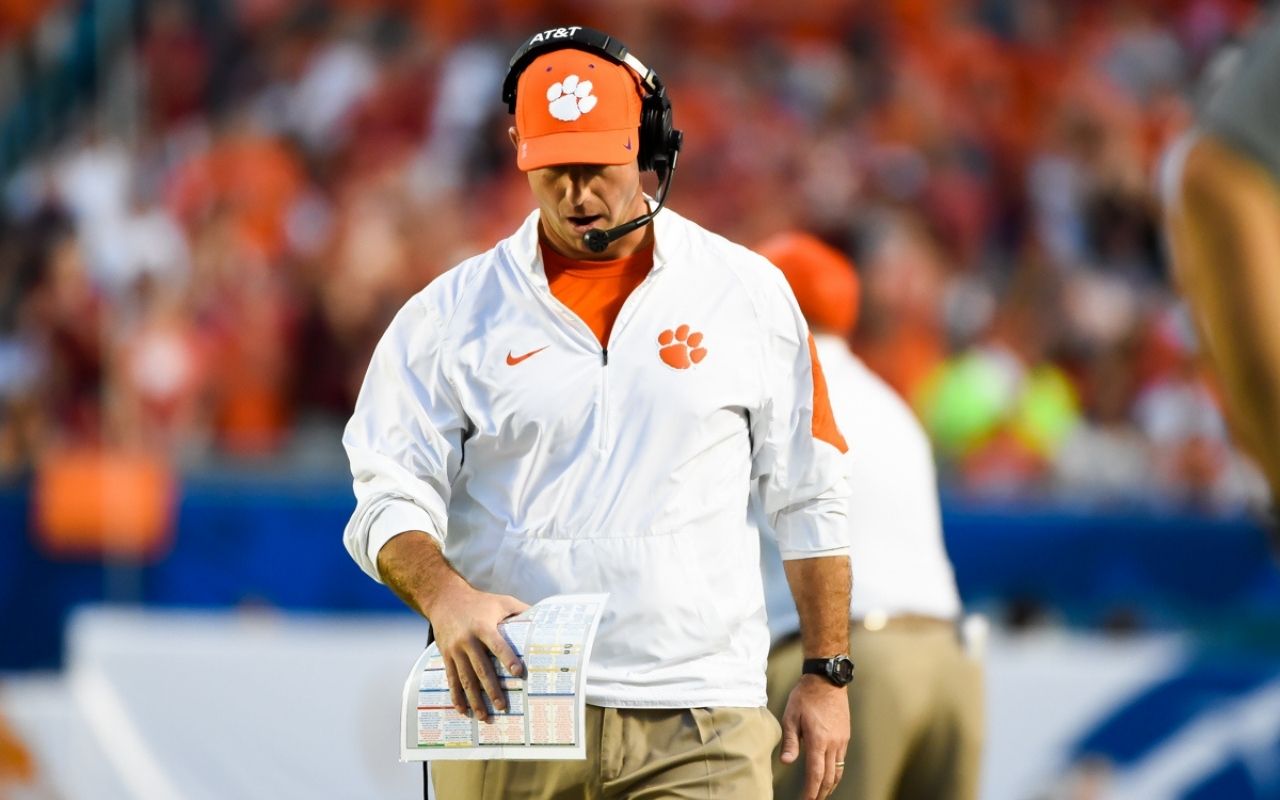College football coaches normally don’t pay much attention to U.S. Supreme Court decisions. College football coaches normally don’t pay much attention to much of anything outside their coaching lanes. They’ve become notorious for their single-minded focus on the gridiron.
But coaches have been paying attention to the nation’s High Court this week because the Supremes have been paying attention to what Justice Neil Gorsuch calls the “complicated relationship” America’s colleges and universities have with “sports and money.”
Too much money in college sports, the Supremes essentially ruled Monday in a unanimous 9-0 decision, is going to too few. Those who administer and coach big-time college athletics are making millions while those who play those sports — and put their bodies at risk in the process — collect no paychecks.
The head football coach at Clemson, Dabo Swinney, now makes $8.3 million a year. He has eight years left on a ten-year pay deal worth $93 million. Four decades ago, back in 1981, Swinney’s Clemson coaching predecessor won a national championship making just $50,000. Today, in 40 of the 50 U.S. states, the highest-paid state employee just happens to be a college football or basketball coach. Nationwide, over 50 college head coaches are currently taking home over $3 million for one year’s labor.
The justification for this exceedingly top-heavy state of affairs? Lawyers for the NCAA, the governing body for college athletics, argue that sharing with students the billions in revenues college sports annually generate would somehow soil the noble ideal of collegiate amateur athletics. The NCAA president who safeguards this noble amateur ideal, observes Justice Gorsuch, currently makes nearly $4 million a year.
“The NCAA’s business model would be flatly illegal in almost any other industry in America,” adds Justice Brett Kavanaugh. “Hospitals cannot agree to cap nurses’ income in order to create a ‘purer’ form of helping the sick.”
Monday’s unanimous Supreme Court ruling in NCAA v. Alston doesn’t actually end our contemporary collegiate sports business-as-usual. But the decision does set the stage for future legal challenges that just might. Reformers have already begun throwing around ideas for alternate arrangements.
Last December, for instance, U.S. senator Cory Booker from New Jersey — a former college athlete himself — proposed a “College Athletes Bill of Rights” that would share the profits college football, basketball, and baseball generate equally among scholarship players. That approach would produce, Booker estimates, as much as $173,000 a year for players in big-time football competition.
Buzz Bissinger, author of the book that birthed the widely acclaimed “Friday Night Lights” football film and TV series, last summer proposed tying annual player pay to coaches’ salaries. Bissinger’s plan would divide each team’s head coach paycheck by the team’s number of scholarship players. The average big-time college football team currently has a coach making $2.7 million and 85 such players. Each of those players would take in $31,765 annually under Bissinger’s approach.
Both these proposals would bring more equity into high-octane college sports. But the ongoing scandal of outsized pay within the nonprofit sector goes far beyond the college sports world. In the year before the pandemic hit, for instance, the CEO at the Memorial Sloan Kettering Cancer Center pulled down $5.8 million in compensation. Feed the Children’s top exec last year pocketed $1.87 million. The controversy over college sports compensation offers us up an opportunity to address this larger continuing scandal.
Let’s seize that opportunity. The basics would be a good place to start: As a society, we extend preferential treatment to nonprofit institutions. To help these institutions “do good,” we give them free passes at tax time. We subsidize, in effect, their operations. We do so gladly. But nonprofits that enrich their top execs are abusing our support — and adding to the inequality that does so much to make our society worse, not better.
Congress in 2017 took a stab at discouraging that enrichment, forcing nonprofits to pay a 21-percent excise tax on executive pay over $1 million. But the tax comes with loopholes — not applying to public colleges, for one — and also lets powerful execs continue to extract massive earnings.
A much better approach: Simply deny nonprofit status to any entities that pay their top executives over ten times what they pay their lowest-paid employees. Organizations that can afford to pay their top execs more in a month — or a week — than their lowest-paid employees can make in a year can afford to do without our tax free passes.
And that goes double for college football teams.
